The ASUS X99-E-10G WS Motherboard Review: 10GBase-T Networking with Intel’s X550-AT2
by Ian Cutress on November 7, 2016 9:00 AM EST- Posted in
- Motherboards
- Intel
- Asus
- 10G Ethernet
- X99
- 10GBase-T
- X99-E-10G WS
- X550
- X550-AT2
CPU Performance, Short Form
For our motherboard reviews, we use our short form testing method. These tests usually focus on if a motherboard is using MultiCore Turbo (the feature used to have maximum turbo on at all times, giving a frequency advantage), or if there are slight gains to be had from tweaking the firmware. We leave the BIOS settings at default and memory at JEDEC (DDR4-2133 C15) for these tests, making it very easy to see which motherboards have MCT enabled by default.
Video Conversion – Handbrake v0.9.9: link
Handbrake is a media conversion tool that was initially designed to help DVD ISOs and Video CDs into more common video formats. For HandBrake, we take two videos (a 2h20 640x266 DVD rip and a 10min double UHD 3840x4320 animation short) and convert them to x264 format in an MP4 container. Results are given in terms of the frames per second processed, and HandBrake uses as many threads as possible.
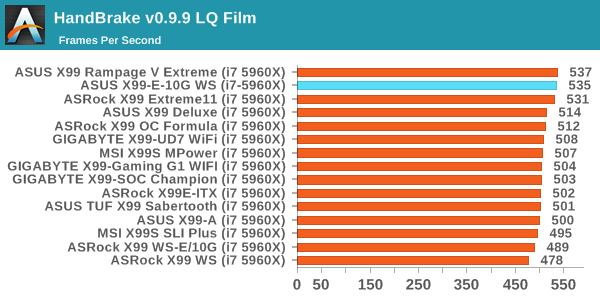
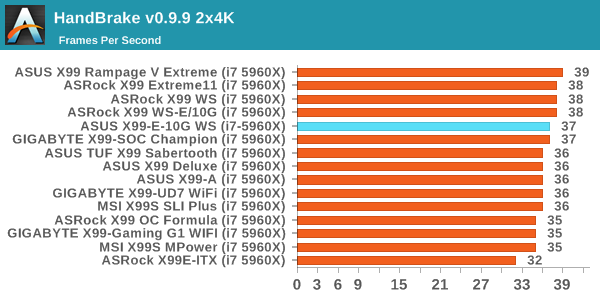
Compression – WinRAR 5.0.1: link
Our WinRAR test from 2013 is updated to the latest version of WinRAR at the start of 2014. We compress a set of 2867 files across 320 folders totaling 1.52 GB in size – 95% of these files are small typical website files, and the rest (90% of the size) are small 30 second 720p videos.
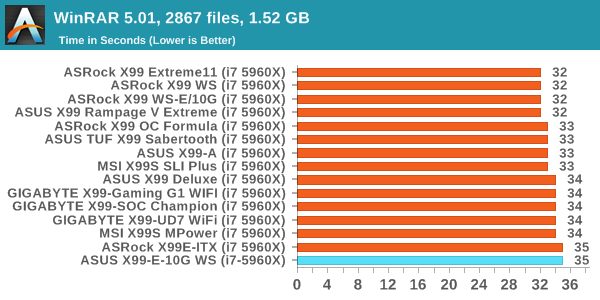
Point Calculations – 3D Movement Algorithm Test: link
3DPM is a self-penned benchmark, taking basic 3D movement algorithms used in Brownian Motion simulations and testing them for speed. High floating point performance, MHz and IPC wins in the single thread version, whereas the multithread version has to handle the threads and loves more cores. For a brief explanation of the platform agnostic coding behind this benchmark, see my forum post here.
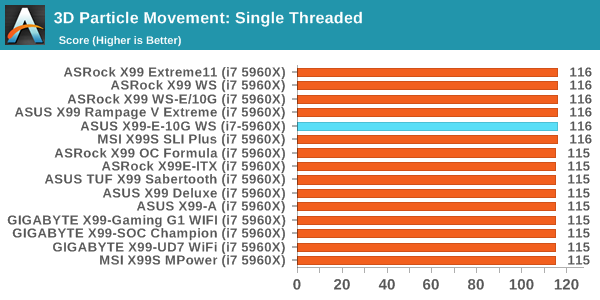

Rendering – POV-Ray 3.7: link
The Persistence of Vision Ray Tracer, or POV-Ray, is a freeware package for as the name suggests, ray tracing. It is a pure renderer, rather than modeling software, but the latest beta version contains a handy benchmark for stressing all processing threads on a platform. We have been using this test in motherboard reviews to test memory stability at various CPU speeds to good effect – if it passes the test, the IMC in the CPU is stable for a given CPU speed. As a CPU test, it runs for approximately 2-3 minutes on high end platforms.
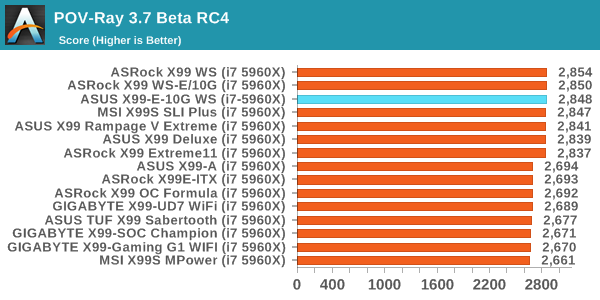
Synthetic – 7-Zip 9.2: link
As an open source compression tool, 7-Zip is a popular tool for making sets of files easier to handle and transfer. The software offers up its own benchmark, to which we report the result.
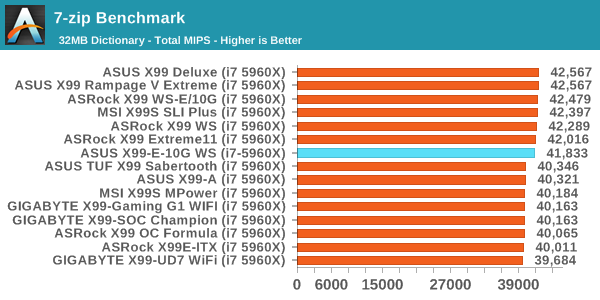










63 Comments
View All Comments
karakarga - Wednesday, November 9, 2016 - link
If you connect a new modem or access point, having 5GHz or newest 60GHz, you need more than 150 megabytes, thus you need faster than 1Gigabit ethernet transfer speed....eek2121 - Wednesday, November 9, 2016 - link
Speak for yourself. Anyone in the photography or content creator will benefit from the faster speeds. Hell, even at my level I could use good 10 Gig hardware for the generation, transferring, storage, and streaming of 4K content across the network to/from a NAS, all while streaming my Blu-ray library to multiple locations in the house and playing a game at the same time.firefoxx04 - Tuesday, November 22, 2016 - link
Are you kidding me? Nobody? Not even someone buying a workstation board with 8+ core support and 16/16/16/16 PCIe support?I just added a 10Gbit fiber card to my desktop and my file server (raid5 with 4 drives) and im getting over twice as much throughput as I was before with no tuning to the driver. 112Mb/s network transfers feel slow now when my desktop is capable of 250-300Mb/s sustained. Hell, I even installed my entire steam library onto my network share because its simply fast enough (with no latency thanks to fiber optics).
But yeah, nobody could possibly benefit from 10G.
eSyr - Monday, November 7, 2016 - link
PCIe switch adds about 100—300ns to RTT, I don't think it would be critical for audio applications.nirsever - Tuesday, November 8, 2016 - link
Actually, there is a rather major shift towards 2.5G and 5G happening these days. It is driven primarily by:+ The recent ratification of the IEEE 802.3bz standard
+ Higher than 1G bandwidth demand of Wave2 11.ac WiFi APs coming up with 2.5G and 5G LAN ports
+ Availability of low cost and low power solutions from Tehuti Networks with PHYs from Marvell and Aquantia
BillR - Tuesday, November 8, 2016 - link
The rumor I heard is that extending a 1G PHY to work at 2.5G didn't add a lot to the price and power (about 30-50% in extra logic/power). Running at 5G my require a lot of the same logic used in a 10G PHY so a 5G solution would not offer huge power/cost advantages over 10G.nirsever - Wednesday, November 9, 2016 - link
I agree with your observation that cost wise, 5G and 10G are the same. However, from our experience, 5G power consumption is significantly lower than 10G. In addition, investing in 5G/2.5G capable NIC gives you the benefit of extending the life of your existing Cat5e/Cat6 cabling beyond 1G which is not possible with "classic" 10GBase-TBillR - Wednesday, November 9, 2016 - link
I agree.BrokenCrayons - Monday, November 7, 2016 - link
Just a thought...for a motherboard review, the feature image doesn't really show the motherboard or have a lot to do with the headline discussing networking.alamilla - Monday, November 7, 2016 - link
For an updated board it seems strange that they removed the Thunderbolt header with no options for Thunderbolt 3 expansion.Disappointing... :(